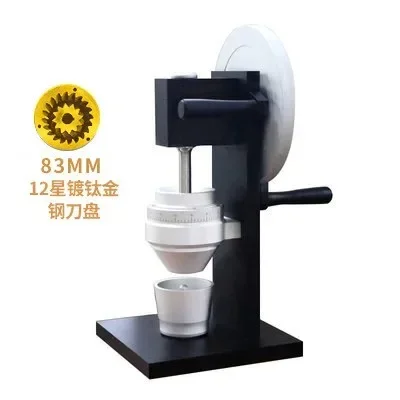Coffee lovers know that the perfect cup starts with perfectly ground beans. While many factors contribute to a great brew, the size of your grinder’s burrs plays a crucial role in determining the quality and consistency of your coffee grounds. This often-overlooked aspect can make the difference between an exceptional cup and a mediocre one.
The relationship between burr size and grind quality isn’t just coffee enthusiasts’ folklore—it’s backed by science. When coffee particles are uniform in size, extraction happens evenly, resulting in balanced flavors. Inconsistent grinds lead to both under-extraction (sour, weak coffee) and over-extraction (bitter, harsh coffee) simultaneously.
In this comprehensive guide, we’ll explore:
– The fundamental mechanics of coffee burrs
– How burr size affects grind consistency through scientific principles
– Comparative analysis of different burr sizes
– Practical implications for your daily brewing
Understanding how manual coffee burr grinders function will transform how you approach your coffee routine. Whether you’re perfecting your espresso grind size or simply looking to improve your daily brew, the knowledge of how burr dimensions impact performance will enhance your coffee experience significantly.
Understanding Coffee Grinder Burrs: The Fundamentals
Burrs are the heart of any quality coffee grinder. Unlike blade grinders that randomly chop beans with a spinning blade (creating wildly inconsistent particles), burr grinders crush beans between two precision-engineered surfaces with teeth-like patterns. This crushing action produces particles with significantly more uniform size and shape.
There are two primary burr types you’ll encounter:
Conical Burrs: Feature a cone-shaped inner burr that fits inside a ring-shaped outer burr. Coffee beans enter from above and are progressively crushed as they move down the cone. These are commonly found in many manual grinders due to their efficient design.
Flat Burrs: Consist of two parallel ring-shaped discs with teeth that face each other. Beans enter through the center and are ground as they move outward between the discs. These often appear in higher-end manual and electric grinders.
The key difference between burr and blade grinders is precision and control. Burrs create a designated grinding path where beans must pass through a specific gap set by the user, ensuring consistent size. The beans have no escape until they’re properly ground to the desired size.
In hand burr grinders, the burrs are typically made from either stainless steel or ceramic. Steel burrs are known for their durability and precision cutting edges, while ceramic burrs resist heat better and stay sharp longer (though they’re more brittle). The material choice affects both grinding performance and maintenance requirements.
Understanding these fundamentals helps appreciate why the size of these burrs matters so significantly for your coffee quality.
The Physics Behind Burr Size and Grind Consistency
The relationship between burr size and grind quality is rooted in fundamental physical principles. Larger burrs directly impact grinding efficiency and consistency through several key mechanisms.
At its most basic level, a larger burr diameter means more surface area available for grinding. This increased grinding surface translates to more cutting edges engaging with the coffee beans simultaneously. For example, a 48mm burr has approximately 60% more surface area than a 38mm burr, which significantly increases the number of cutting points.
Grind consistency, technically defined as particle size distribution, measures how uniform your coffee grounds are. A narrow distribution (most particles similar in size) produces even extraction, while a wide distribution leads to uneven extraction and mixed flavors.
Larger burrs provide key physical advantages:
- Greater cutting efficiency per rotation – With more cutting edges engaging the beans per revolution, larger burrs process more coffee with less movement
- Longer grinding path – Beans travel further between entry and exit points, allowing more precise cutting
- Better bean feeding – Larger burrs create improved flow dynamics for beans entering the grinding chamber
- Reduced grinding force needed – The leverage advantage of larger diameters reduces the force required per bean
For users of manual grinders, burr size significantly affects the grinding experience. While larger burrs process coffee more efficiently per rotation, they also require more torque to turn. This creates an interesting balance between grinding speed and effort that manufacturers must consider when designing mastering espresso grind size for home users.
The concept of “bean path” – how far coffee beans travel during grinding – is particularly important. Larger burrs create longer paths, giving more opportunities for consistent sizing before the grounds exit.
Critical Mechanisms: How Larger Burrs Enhance Grind Quality
Surface Area & Cutting Efficiency
The mathematical relationship between burr diameter and surface area follows a square law – when you increase a burr’s diameter by 25%, its surface area increases by approximately 56%. This isn’t just theoretical; it translates directly to grinding capability.
For example, a 64mm burr has roughly 2.8 times the surface area of a 38mm burr. This dramatic increase means more cutting teeth engage with beans simultaneously, producing more consistent particle sizes with each rotation. The increased contact points also provide better control over the grinding process, especially important for achieving the precise particle sizes needed for espresso.
Heat Management & Flavor Preservation
Heat is the enemy of coffee flavor. When burrs generate excessive heat during grinding, it can:
– Prematurely extract volatile compounds
– Alter oil structures in the beans
– Create bitter or “burned” flavor notes
– Reduce the aromatic complexity of the final brew
Smaller burrs, having less mass and surface area to dissipate heat, tend to concentrate friction-generated heat more intensely. Larger burrs distribute this heat across more material, keeping the grinding temperature lower.
In manual grinders, this is less problematic than in electric models since hand grinding generates less RPM (revolutions per minute). However, the heat transfer in manual coffee grinders still matters, especially for heat-sensitive light roasts where subtle flavor notes can be easily damaged.
Particle Distribution Optimization
Professional coffee making requires understanding two problematic particle types:
– “Fines” – extremely small particles that over-extract quickly
– “Boulders” – oversized particles that remain under-extracted
Larger, well-engineered burrs typically produce a narrower particle size distribution with fewer fines and boulders. A quality 48mm burr set might reduce fines production by 20-30% compared to a 38mm set of similar design when grinding for espresso.
This uniformity directly impacts extraction. When using precision grind settings for espresso, uniform particles extract at similar rates, producing balanced flavors without competing sour and bitter notes.
Comparing Burr Sizes: What the Numbers Mean for Your Grind
Understanding common burr sizes helps make informed decisions about grinders. Here’s how different sizes compare:
| Burr Size | Category | Typical Applications | Strengths | Limitations |
|---|---|---|---|---|
| 30-35mm | Small | Travel grinders, Entry-level | Portable, Affordable, Lower torque required | Less consistent for espresso, Slower grinding |
| 38-40mm | Medium | Premium portable, Mid-range | Good balance of size/performance, Versatile | Moderate speed, Some limitations for lightest roasts |
| 48-55mm | Large | High-end manual, Professional | Excellent consistency, Faster grinding, Superior for espresso | Higher torque needed, Less portable, More expensive |
| 60mm+ | Commercial | Professional, Café settings | Exceptional uniformity, Fastest grinding | Very high torque demands, Rarely seen in manual grinders |
It’s important to note that bigger isn’t always better. The appropriate burr size depends on your brewing methods, volume needs, and practical considerations. Many excellent manual grinders use 38mm burrs that provide exceptional quality for most home users.
For typical home brewing, the sweet spot often lies in the 38-48mm range, offering a balance between grinding quality and practical usability. This range provides excellent results for most brewing methods while remaining manageable for hand grinding.
The precision manual grinders with appropriately sized burrs can achieve results that rival or exceed electric grinders costing much more, especially when paired with proper espresso grind settings for the perfect shot.
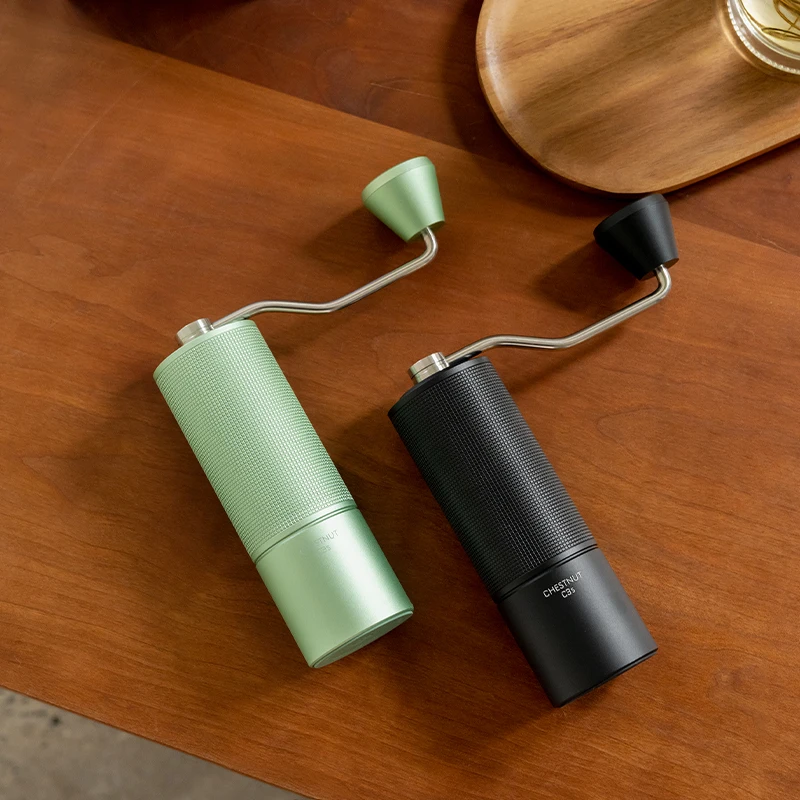
Burr Geometry & Size: The Critical Interplay
Conical Burrs
In conical burr systems, size interacts with geometry in fascinating ways. The cone angle and height combine with diameter to determine grinding characteristics:
- Larger conical burrs provide longer grinding paths as beans travel from the wide entry to the narrow exit
- The grinding path in a 48mm conical burr is typically 30-40% longer than in a 38mm burr
- This extended path allows more precise sizing and refinement of particles
- Conical burrs often produce a slightly bimodal distribution (two peak sizes) which many espresso enthusiasts prefer for body and complexity
Conical burrs of different sizes excel in different applications. Mid-sized (38mm) conicals often work well for pour-over and drip methods, while larger conicals (48mm+) may provide the consistency needed for espresso’s demanding requirements.
Flat Burrs
Flat burr performance changes significantly with size increases:
- Larger flat burrs dramatically increase the cutting surface working simultaneously
- A 55mm flat burr has nearly twice the effective grinding area of a 45mm flat burr
- Flat burrs typically produce more unimodal distributions (clustered around one size)
- This particle consistency creates clarity and definition in flavor notes
While less common in manual grinders, flat burr hand grinders represent a growing premium segment. The geometry works particularly well for achieving the correct grind setting for espresso, especially for light roasts where extraction evenness is critical.
The choice between conical and flat isn’t just about personal preference—it interacts directly with size considerations to determine grinding performance for different brewing methods.
Beyond Size: Critical Factors That Complement Burr Dimensions
Burr Alignment Precision
As burr size increases, alignment becomes increasingly critical. Even slight misalignment has greater impact with larger diameters:
- A 0.1mm alignment error has more significant consequences in a 48mm burr than a 38mm burr
- Proper alignment ensures the entire burr surface contributes to grinding
- Quality construction maintains alignment stability during grinding forces
- Manual grinders must consider how hand pressure and movement affect alignment
Well-engineered manual grinders incorporate stabilization systems to maintain alignment even under the variable pressures of hand grinding.
Material Quality & Engineering
The interaction between burr material and size significantly impacts performance:
- High-quality steel burrs maintain sharp cutting edges longer
- Ceramic versus steel burr coffee grinders show different performance characteristics as size increases
- Specialized coatings like titanium nitride can enhance durability of cutting edges
- Manufacturing precision becomes more challenging with larger burrs, requiring tighter tolerances
Premium ceramic burr coffee grinders combine material benefits with appropriate sizing to create specific grinding profiles for different brewing methods.
Grinding Mechanism Design
The entire grinding assembly must support the burrs effectively:
- Larger burrs require more robust mounting systems
- Stabilization mechanisms prevent wobble during grinding
- Bean feeding systems must match burr capacity
- Bearing quality becomes increasingly important as size increases
The engineering precision of these supporting elements often distinguishes premium grinders from basic models, even when burr sizes appear similar.
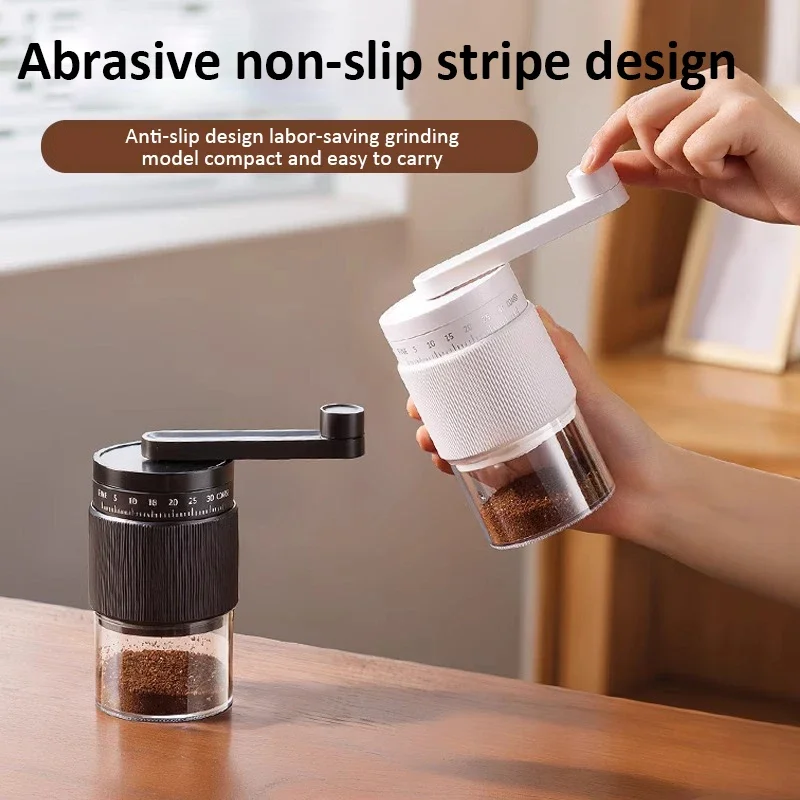
Practical Impacts: How Burr Size Translates to Your Cup
Flavor Clarity & Extraction Quality
The ultimate test of burr performance is in your cup. Proper sized and aligned burrs create noticeable improvements:
- Consistent particles extract at similar rates, producing balanced flavors
- Reduced fines minimize bitter, astringent notes that can overpower complexity
- Even extraction unlocks flavor clarity – the ability to distinguish specific notes
- “Flavor separation” becomes possible, where distinct flavor components are identifiable rather than muddled together
Tasters often describe coffee from high-quality, properly sized burrs as having “definition,” “clarity,” or “separation” between flavor notes. Instead of simply “fruity,” you might taste distinct “raspberry,” “plum,” or “citrus” notes.
Brewing Method Optimization
Different brewing methods have specific requirements best served by appropriate burr configurations:
Espresso: The high pressure and short contact time make espresso extremely sensitive to grind consistency. Larger burrs generally excel here, minimizing channeling and producing the uniform resistance needed for proper extraction. Settings on manual and automatic espresso grinders benefit from the precision larger burrs provide.
Pour Over: Clean pour-over methods highlight both the benefits of consistency and the problems of excessive fines. Medium to large burrs that minimize fines production create the clean, defined flavor profiles these methods are known for.
French Press: Even coarse grinds benefit from consistency. Large burrs help reduce the fine particles that can slip through the mesh filter and create muddy texture.
AeroPress: This versatile brewer works with many grind sizes but shows the advantages of consistent particles across its range of recipes. The ability to achieve 30-second espresso-style extraction depends significantly on grind uniformity.
Manual vs. Electric: Burr Size Considerations for Hand Grinders
Manual grinders face unique challenges and opportunities regarding burr size. The human-powered nature creates special considerations:
Advantages of Larger Burrs in Manual Grinders:
– Fewer rotations needed for the same amount of coffee
– More consistent results, especially for demanding methods like espresso
– Often better constructed overall, with better alignment and materials
Challenges of Larger Burrs in Manual Grinders:
– Require significantly more torque (turning force) to operate
– Can be tiring for daily use, especially for espresso
– Add weight and size, reducing portability
– Typically increase cost substantially
For travel-focused users, compact grinders with 30-38mm burrs balance portability with acceptable performance. Premium manual coffee grinders for espresso often feature 47-48mm burrs to achieve the consistency needed, despite requiring more effort.
The ergonomics of hand crank grinders become increasingly important as burr size increases. Quality designs incorporate comfortable handles, optimal mechanical advantage, and smooth bearings to offset the increased force requirements.
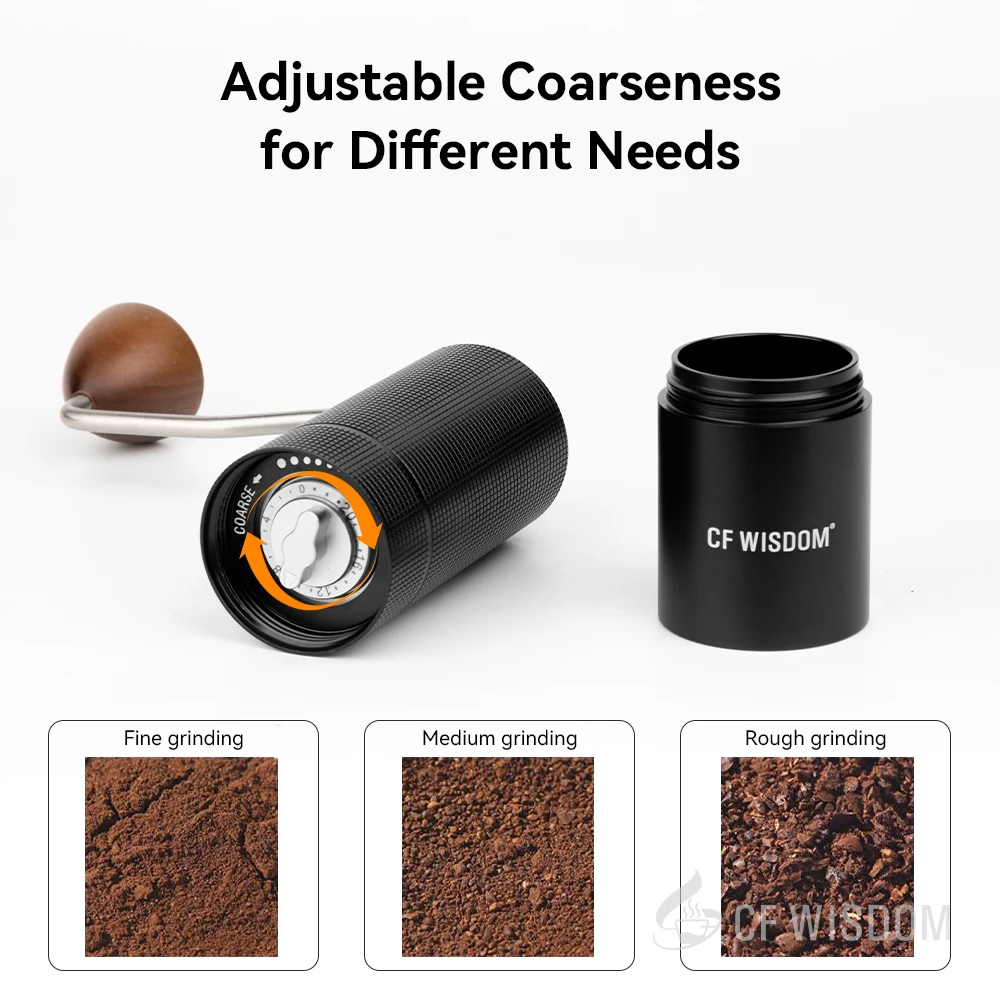
Finding Your Ideal Burr Size: A Decision Framework
To determine the optimal burr size for your needs, consider these factors:
Primary Brewing Method
– Espresso: Generally benefits from 47mm+ burrs for consistency
– Pour-over/Drip: 38mm+ burrs provide excellent results
– French Press/Coarse brewing: 38mm burrs usually sufficientVolume Requirements
– Occasional use (1-2 cups): Smaller burrs acceptable
– Daily use (multiple cups): Medium burrs recommended
– Heavy use (multiple brewing sessions): Larger burrs reduce effortBudget Considerations
– Entry-level ($30-75): Typically 30-35mm burrs
– Mid-range ($75-150): Usually 38mm quality burrs
– Premium ($150-300): Often 47-48mm precision burrs
– Ultra-premium ($300+): 48mm+ specialized burrsPortability Needs
– Travel priority: Compact 30-38mm travel coffee grinders
– Home priority with occasional travel: 38mm offers good balance
– Stationary use only: 47mm+ maximizes quality
The performance difference between a well-made 38mm burr grinder and a 48mm grinder is noticeable but incremental. For most brewing methods, a quality 38mm grinder provides excellent results. The jump to 48mm offers refinement rather than transformation, particularly important for achieving the perfect grind setting for espresso.
Fine Adjustment Hand Grinder, Precision Manual Grinder, Travel Coffee Grinder
Price range: $185.11 through $494.63 Select options This product has multiple variants. The options may be chosen on the product pageHand Burr Grinder, Hand Crank Coffee Grinder, Manual Espresso Grinder, Portable Coffee Grinder
Price range: $262.72 through $300.22 Select options This product has multiple variants. The options may be chosen on the product pageManual Burr Mill, Manual Coffee Grinder Stainless Steel, Manual Coffee Mill Grinder, Mechanical Coffee Grinder
Price range: $127.26 through $130.32 Select options This product has multiple variants. The options may be chosen on the product pageHand Burr Grinder, Manual Coffee Grinder Stainless Steel, Precision Manual Grinder
Price range: $183.64 through $187.52 Select options This product has multiple variants. The options may be chosen on the product page
Maintenance & Longevity: Caring for Different Sized Burrs
Proper maintenance ensures your burrs perform optimally regardless of size:
Cleaning Requirements:
1. Small burrs (30-35mm): Generally easier to clean but may need more frequent attention
2. Medium burrs (38-40mm): Balance between access and surface area
3. Large burrs (47mm+): More surface to clean but often better engineering for disassembly
Seasoning New Burrs:
All new burrs have microscopic manufacturing burrs and imperfections. Running 1-2 pounds of inexpensive beans through new burrs helps smooth these imperfections for optimal performance. Larger burrs typically require more seasoning coffee.
Expected Lifespan:
– Steel burrs: Approximately 500-1500 pounds of coffee depending on quality and size
– Ceramic burrs: Often 1000-2000 pounds but more susceptible to damage
Regardless of size, proper cleaning of manual burr grinders prevents oils and fine particles from affecting performance. Regular maintenance routines for maintaining manual coffee grinders extend their working life significantly.
Common Myths About Burr Size Debunked
Myth: Bigger burrs are always better
Fact: While larger burrs offer advantages in consistency and speed, the overall grinder design, manufacturing precision, and alignment often matter more than an extra few millimeters of diameter.
Myth: Small burrs can’t produce espresso-quality grinds
Fact: Well-made 38mm burrs can produce excellent espresso grinds, though they may generate more fines than larger burrs. Many renowned manual espresso grinders use 38mm burrs effectively.
Myth: Burr size is the primary indicator of grinder quality
Fact: Material quality, manufacturing precision, alignment, and overall design often impact performance more than size alone. A precision-made 38mm burr set typically outperforms a poorly made 48mm set.
Myth: Larger burrs always grind faster in manual grinders
Fact: While larger burrs process more coffee per rotation, they also require more force to turn. The actual grinding speed depends on how quickly the user can comfortably apply the necessary force.
Myth: Burr size is the main factor in heat generation
Fact: Grinding speed (RPM) and burr material affect heat generation more significantly than size alone. Manual grinders generally produce less heat than electric models regardless of burr size.
Understanding the truth beyond numbers for the perfect espresso grind helps make informed decisions based on actual performance rather than specifications alone.
Expert Perspectives: What Professional Baristas Say About Burr Size
Professional coffee experts tend to share certain perspectives about burr size:
Coffee competition baristas often note that consistency becomes increasingly important as coffee quality improves. Many find that larger burrs help showcase the nuanced flavors of specialty coffee by creating more uniform extraction.
“The difference between a good 38mm burr and a good 48mm burr isn’t night and day—it’s subtlety and refinement. For everyday brewing, quality construction matters more than a few extra millimeters,” reflects a common sentiment among professionals.
Regarding manual grinding specifically, many professionals recommend balancing burr size with usability. A grinder that feels comfortable and encourages daily use ultimately produces better coffee than a theoretically superior grinder that causes frustration.
For home users looking to achieve professional results, mastering espresso grinds with manual machines often depends more on technique and understanding than having the largest possible burrs.
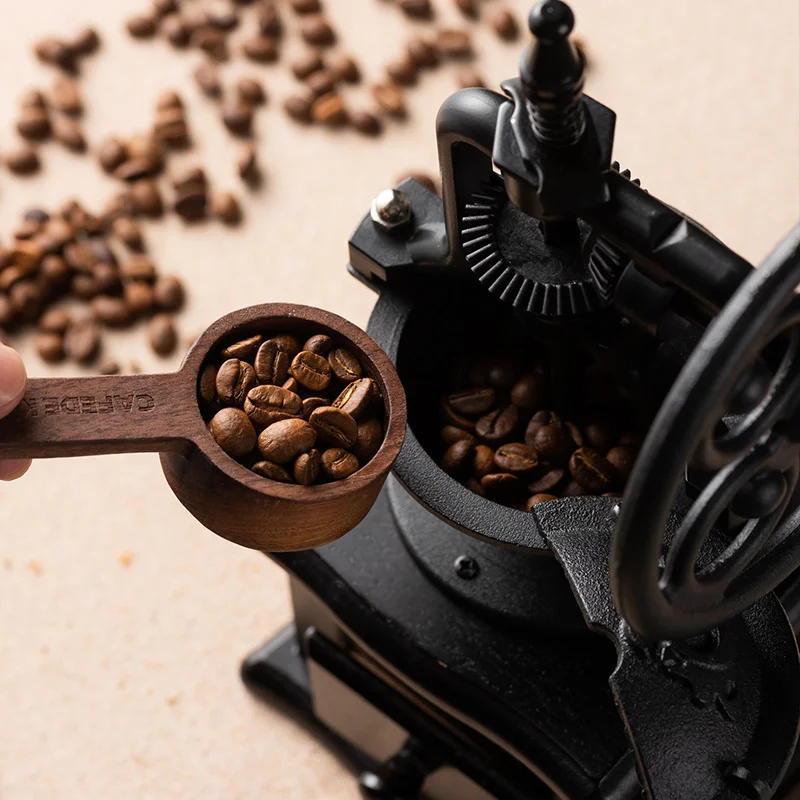
Is Upgrading to Larger Burrs Worth It? A Cost-Benefit Analysis
When considering an upgrade to a grinder with larger burrs, weigh these factors:
Potential Benefits:
– Improved grind consistency, particularly noticeable for espresso
– Reduced grinding time with fewer rotations needed
– Often better overall construction and alignment
– Typically longer lifespan due to premium materials
Cost Considerations:
– A jump from 38mm to 48mm burrs typically increases price by $75-150
– Premium materials and construction that often accompany larger burrs add further cost
– Diminishing returns begin to apply—the difference between 38mm and 48mm is greater than between 48mm and 64mm for most users
Who Should Upgrade:
– Dedicated espresso enthusiasts seeking maximum consistency
– Those who grind larger volumes regularly
– Users who can detect subtle flavor differences
– Those willing to adapt to increased turning resistance
Who Might Stay with Medium Burrs:
– Brewers who primarily use medium-coarse methods (pour-over, drip)
– Those who prioritize ergonomics and ease of grinding
– Users who value portability
– Those on more limited budgets
For many coffee lovers, a quality manual espresso grinder with well-designed burrs of any size represents a dramatic improvement over blade grinders or budget burr grinders, regardless of size specifications.
Conclusion
The relationship between burr size and grind quality is clear: larger burrs generally provide advantages in consistency, precision, and efficiency—all factors that translate directly to better extraction and flavor in your cup. However, this relationship exists within a complex system where material quality, manufacturing precision, and overall design are equally important.
The perfect burr size for you depends on your brewing methods, expectations, physical capabilities, and budget. For most home brewers, a quality grinder with well-made 38mm burrs provides excellent results across brewing methods. Those focusing specifically on espresso or seeking the absolute pinnacle of consistency may benefit from larger 47-48mm+ burrs.
Remember that consistency is the ultimate goal—uniform particles extract evenly and produce balanced, clean flavors regardless of brewing method. Investing in quality grinding equipment with appropriately sized burrs for your needs is perhaps the single most important step toward consistently great coffee.
For those looking to develop their grinding technique further, exploring resources on mastering grind consistency with hand burrs can help maximize the performance of whatever grinder you choose.

